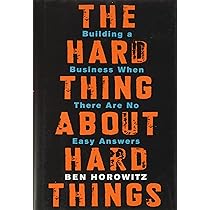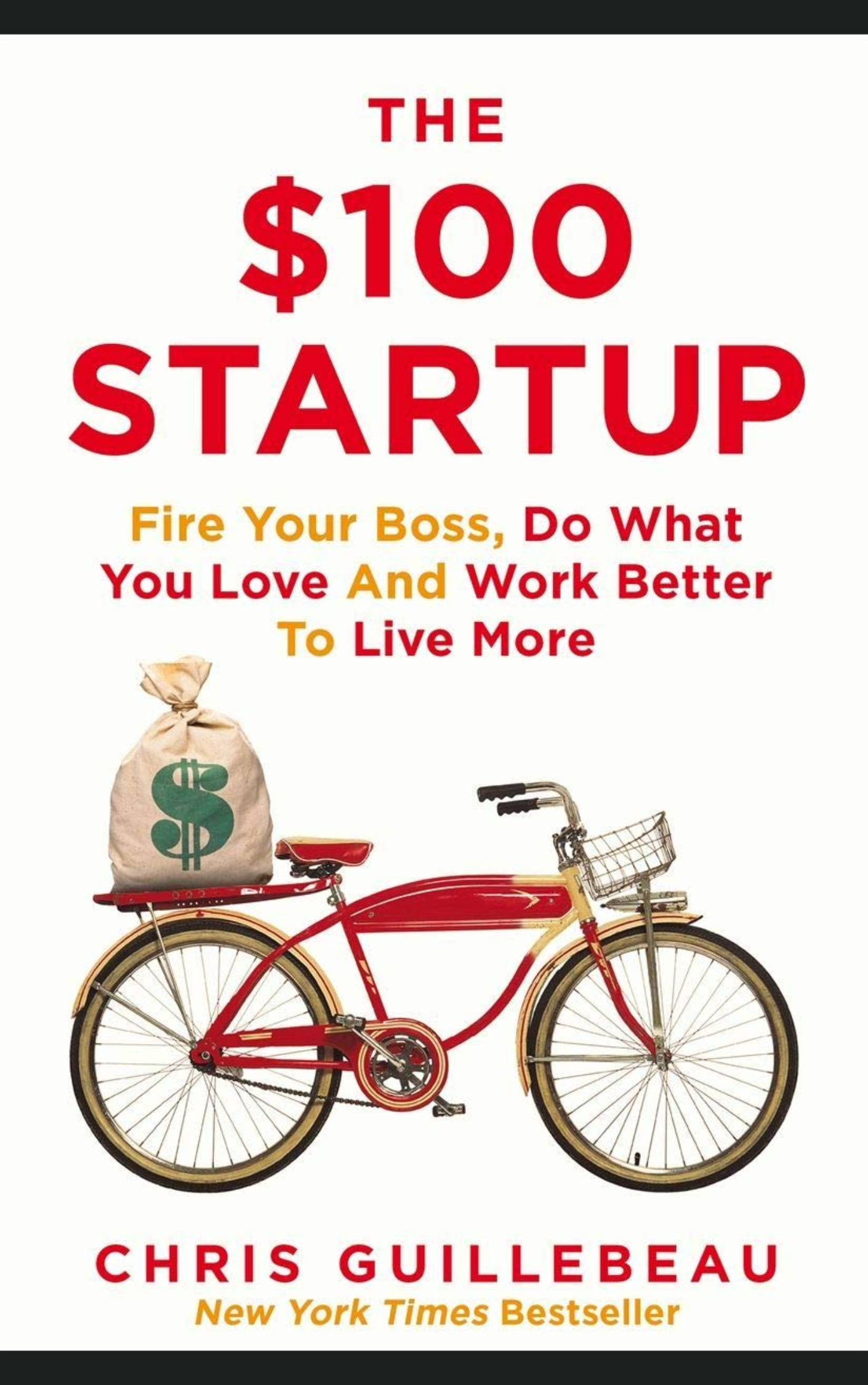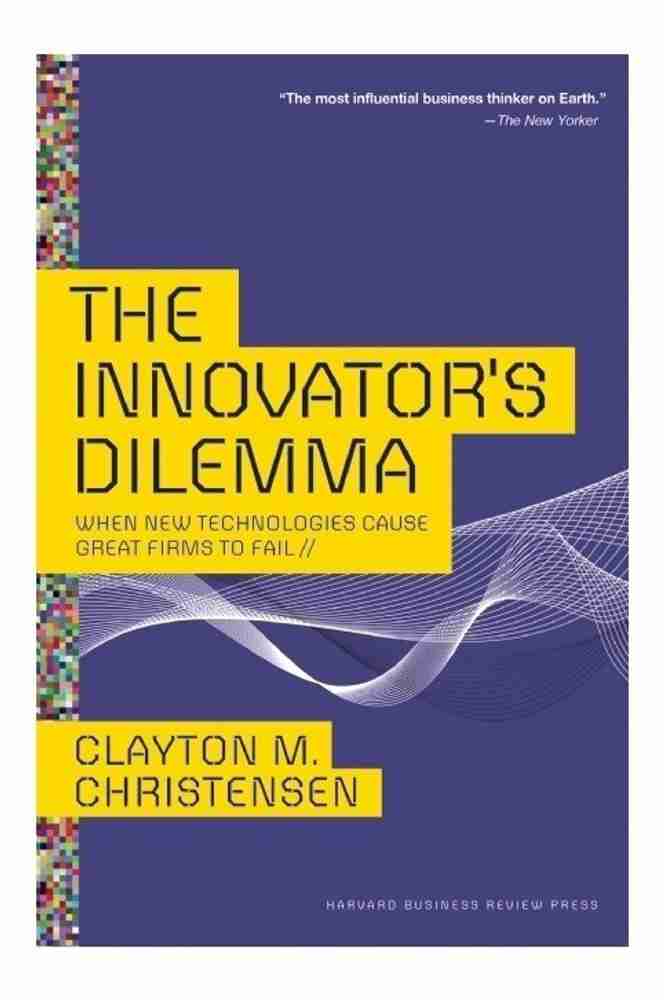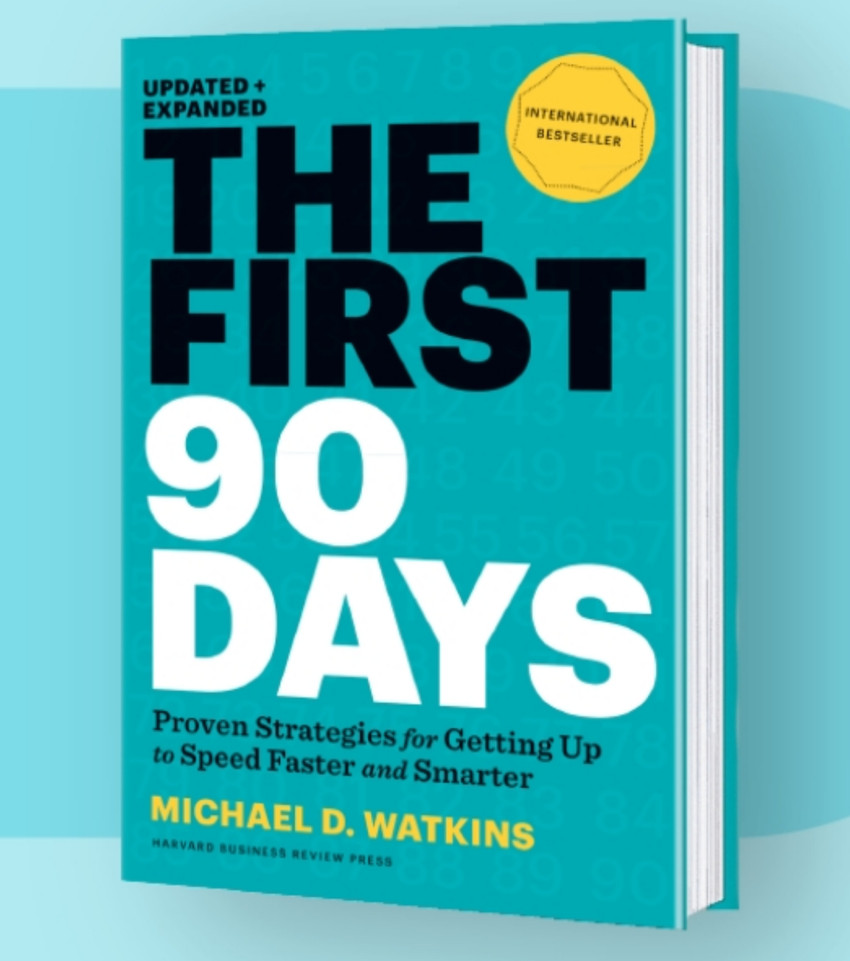Top 22 Entrepreneurship Books [Must Read in 2023]
We’ve all been there—sitting at our desks, daydreaming about the groundbreaking businesses we could build, the innovations we could spearhead, and the legacy we could leave. But between that dream and reality lies a chasm of uncertainty, fear, and lack of knowledge.
What if I told you that chasm could be bridged with the wisdom encapsulated in just a few pages? Years ago, a budding entrepreneur sat in a dimly lit room, clutching a book that would soon catapult his startup vision into a global empire. That book was one among the 22 we’re about to unveil.
Dive into our curated list of “23 Best Entrepreneurship Books to Read.” Each tome is a treasure trove of experiences, failures, successes, and invaluable lessons that can propel your entrepreneurial journey from a mere dream to a remarkable reality. Because every visionary entrepreneur begins with a story, and it’s time you started writing yours.

1. The Lean Startup by Eric Ries
The Lean Startup by Eric Ries provides a scientific approach to creating and managing startups, focusing on experimentation and iterative product releases to determine what customers want. This book revolutionized how startups are built, advocating validated learning over elaborate planning. Ries draws on lean manufacturing principles to eliminate waste and quickly develop customer-focused products. Key concepts covered include minimum viable products (MVPs), actionable metrics, innovation accounting, build-measure-learn feedback loops, and pivots. Ries demonstrates why startups must operate differently from established companies to adapt and survive in extreme uncertainty rapidly.
5 Reasons to Read This Book
- Learn a systematic, scientific approach for creating and managing successful startups.
- Understand the importance of the “Minimum Viable Product” (MVP).
- Discover the Build-Measure-Learn feedback loop, which accelerates product development.
- Gain insights into the value of continuous deployment and split testing.
- Recognize the importance of validated learning and adaptive innovation.

2. The Hard Thing About Hard Things by Ben Horowitz
In The Hard Thing About Hard Things, Ben Horowitz offers blunt, insightful advice on the challenges of building and running a startup based on his own experiences. He covers tough topics like firing executives, Board of Director conflicts, and the pressures of being a CEO. Horowitz aims to help entrepreneurs lead their companies through difficult times. He stresses the importance of culture, vision, and scaling successfully. While filled with practical business lessons, this book also discusses the psychological stresses, self-doubt, and loneliness a CEO faces.
5 Reasons to Read this Book
- Get candid insights from a successful entrepreneur about the challenges of running a startup.
- Understand the importance of building company culture.
- Learn strategies to handle the most challenging problems business school won’t teach you.
- Grasp the difference between ‘peacetime’ and ‘wartime’ CEOs.
- Gain insights into the right time to sell a company.

3. The $100 Startup by Chris Guillebeau
The $100 Startup by Chris Guillebeau profiles interesting entrepreneurs who built profitable businesses starting with very little capital. Through case studies, Guillebeau reveals creative ways to launch low-cost startups and tap into new opportunities. He focuses on small niche businesses and online enterprises, leveraging skills and existing assets, outsourcing tasks, and generating multiple income streams. Guillebeau’s book is an inspirational guide for those dreaming of starting a successful microbusiness or side hustle.
5 Reasons to Read This Book
- Get inspired by real-life examples of successful businesses started with minimal investment.
- Learn how to monetize your passion and skills.
- Understand the concept of value and how to provide it to your customers.
- Discover practical steps to launch a micro-business.
- Gain insights into marketing and promotion for small businesses.

4. Zero to One by Peter Thiel
Zero to One by Peter Thiel is a contrarian take on business strategy and innovation. Thiel argues that the best entrepreneurs aim to create monopolies by solving problems in radically new ways. He emphasizes the importance of asking good questions and thinking for yourself rather than just copying existing ideas. Thiel encourages startups to identify secrets and unknowns, develop unique insights, and pursue courageous visions. He distinguishes between horizontal progress (incremental improvements) and vertical progress (doing new things), arguing the latter creates real value. Thiel also discusses what makes an effective team, the value of sales, building a fortress business, and competing with today’s giants.
5 Reasons to Read this Book
- – Dive into the philosophy of creating something new under the sun.
- Understand the importance of monopolies in business
- Learn about the power of network effectsGrasp the significance of vertical progress versus horizontal progress.
- Explore the seven questions every startup should answer.

5. The E-Myth Revisited by Michael E. Gerber
The E-Myth Revisited by Michael E. Gerber debunks common myths and misconceptions that keep entrepreneurs from succeeding. Gerber differentiates between working on your business with systems and processes vs. just working in your business without the capacity to grow. He emphasizes that a business must be intentionally designed and systematized, not built around a single charismatic founder. Gerber walks readers through how to document systems, create an operations manual, and leverage the franchise business model structure. He advocates developing turn-key operations so you can replace yourself in the day-to-day work and focus on long-term, big-picture leadership.
5 Reasons to Read this Book
- Understand why most small businesses fail and how to avoid common pitfalls.
- Learn the difference between working on your business and working in your business.
- Grasp the concept of the “business format franchise” and its importance.
- Discover the three vital roles in a business: Entrepreneur, Manager, and Technician.
- Get a blueprint for transforming a small business into a world-class enterprise.

6. Rework by Jason Fried and David Heinemeier Hansson
Rework by Jason Fried and David Heinemeier Hansson challenges conventional wisdom about business processes and productivity. The authors espouse lean, iterative approaches over grand strategic plans. They argue for smaller teams, ignoring the competition, saying no to unreasonable requests, and prioritizing less with more discipline. Rework emphasizes “getting real” work done over excessive meetings and talk. It has contrarian principles and unconventional wisdom for running fast, efficient operations. Rework includes tips for productive company culture, advertising, hiring, communication, and when to stick to your vision vs. listening to customers.
5 Reasons to Read this Book
- – Challenge traditional business norms and practices.
- Understand the value of simplicity in business operations.
- Learn about the pitfalls of meetings, plans, and outside investors.
- Discover how to build a sustainable business with a small team.
- Gain insights into focusing on quality over quantity.

7. The Lean Entrepreneur by Brant Cooper and Patrick Vlaskovits
The Lean Entrepreneur by Brant Cooper and Patrick Vlaskovits provides a step-by-step guide to employing lean startup methods within an entrepreneurial venture. It focuses on quickly testing and validating your riskiest assumptions to avoid wasting time and money on ideas that won’t work. The authors introduce the concept of a continuous innovation loop consisting of envisioning, stewarding, learning, and seizing stages. They advocate scientific experimentation, getting out of the building to test hypotheses, minimum viable products (MVPs), actionable metrics, and utilizing innovation accounting. The book includes helpful examples of fictional companies applying lean techniques to reduce risks.
5 Reasons to Read This Book
- Delve deeper into the lean startup methodology tailored for entrepreneurs.
- Understand the importance of market segmentation and customer personas.
- Learn how to test business hypotheses effectively.
- Discover techniques for pivoting when necessary.
- Grasp the importance of actionable metrics over vanity metrics.

8. The Startup Owner’s Manual by Steve Blank and Bob Dorf
The Startup Owner’s Manual by Steve Blank and Bob Dorf outlines a structured and scientific approach to developing new products and ventures based on the Customer Development process. This step-by-step guide integrates the Business Model Canvas as a framework to get from idea to viable company through an iterative process of hypothesis testing and customer feedback. It provides a prescriptive checklist of activities in each customer development stage (customer discovery, validation, creation, building). The Startup Owner’s Manual also covers best practices for customer and agile development, common startup pitfalls, fundraising strategies, and transitioning to scaling up.
5 Reasons to Read This Book
- Get a comprehensive guide on customer development and lean startup methodology.
- Learn step-by-step processes for getting, keeping, and growing customers.
- Understand the phases of a startup and how to navigate each.
- Discover how to build a scalable and repeatable business model.
- Gain insights into effective customer feedback loops.

9. The 4-Hour Workweek by Timothy Ferriss
The 4-Hour Workweek by Timothy Ferriss offers unconventional tactics for working smarter, not harder. It focuses on eliminating busy work and setting up systems to outsource and automate tasks, leveraging technology and virtual assistants. Ferriss’ 80/20 principle emphasizes identifying your most important 20% of activities and focusing on those high-impact tasks. This allows you to maximize productivity and free time. The book advocates lifestyle design, online business models, and taking mini-retirements to recharge. Ferriss aims to help people escape the deferred life plan and live life on their own terms.
5 Reasons to Read this Book
- Explore the concept of lifestyle design and escaping the 9-5 routine.
- Learn about automating and outsourcing tasks to free up time.
- Discover the principle of selective ignorance.
- Understand the importance of setting boundaries in work and life.
- Get practical tips for remote work and travel.

10. Traction by Gabriel Weinberg and Justin Mares
Traction by Gabriel Weinberg and Justin Mares provides actionable advice for getting traction or quantifiable evidence of market demand. The authors focus on nineteen traction channels entrepreneurs can test: content marketing, SEO, social media marketing, public relations, affiliate programs, and more. Traction emphasizes growth hacking experiments, qualitative and quantitative metrics, and leveraging existing user bases. It offers a strategic framework for prioritizing marketing channels, identifying low-hanging fruit, and systematically figuring out what drives growth. The book shares case studies demonstrating traction tactics and provides specific guidance on growth hacking techniques.
5 Reasons to Read this Book
- Understand the 19 different channels you can use to get traction for your business.
- Learn how to choose the best traction channels for your unique situation.
- Discover the “Bullseye Framework” for testing and optimizing these channels.
- Gain insights into the importance of focusing on core metrics.
- Learn from interviews with successful entrepreneurs about their traction strategies.

11. The Art of the Start by Guy Kawasaki
The Art of the Start by Guy Kawasaki applies startup lessons from Apple and other ventures to entrepreneurs looking to launch companies that matter. Kawasaki stresses the importance of passion, commitment, and creating meaning. He advocates bootstrapping and preserving equity when possible. The book emphasizes building great products, teams, and customer evangelists. It delves into topics including positioning, pitching, recruiting, managing, funding, and establishing a brand. Kawasaki brings humor and concise wisdom to essential startup advice on vision, execution, endurance, and exceeding customer expectations consistently.
5 Reasons to Read this Book
- Gain insights from a seasoned venture capitalist and entrepreneur.
- Learn about the essentials of starting a business, from pitching to product development.
- Understand the importance of bootstrapping and building a strong team
- Get practical advice on branding and positioning your startup.
- Discover the art of innovation and how to stand out in the market.

12. Thinking, Fast and Slow by Daniel Kahneman
Thinking Fast and Slow by Daniel Kahneman offers insights into how humans make decisions and judgments, often irrationally. The book explores two modes of thinking – fast, intuitive, and emotional vs. slow, deliberate, and logical. Kahneman, a psychologist, integrates insights from behavioral economics and cognitive science. He provides a framework for understanding biases, heuristics, and logical fallacies that influence judgment. Thinking Fast and Slow helps explain why humans struggle with probability, risk, short-termism, and overconfidence. It discusses the roles of intuition and the unconscious mind and the principles of choice, prediction, and happiness that impact decision-making.
5 Reasons to Read this Book
- Dive deep into human psychology and how we think.
- Understand the two systems of thinking: System 1 (fast and intuitive) and System 2 (slow and deliberate).
- Learn about cognitive biases and how they affect decision-making.
- Discover the concept of prospect theory and its implications for economics.
- Gain insights into the pitfalls of overconfidence in business and life.

13. The Innovator’s Dilemma by Clayton M. Christensen
The Innovator’s Dilemma by Clayton M. Christensen examines how leading companies fail by not adapting to technological change and disruptive innovation. He observes that well-managed companies focus on serving profitable customers and improving “sustaining innovations” for existing products. Meanwhile, they miss the next generation of technologies and business models because these appeal first to new customers and niche markets. The book explains the principles of disruptive innovation and when to ignore customers. Christensen argues that to succeed, companies must empower autonomous teams, have patience for innovation to mature, and develop new capabilities before legacy advantages disappear.
5 Reasons to Read this Book
- Understand why large companies can get disrupted by smaller ones.
- Learn about the challenges of balancing sustaining versus disruptive innovation.
- Discover the concept of “jobs to be done” and its importance in product development.
- Get insights into the lifecycle of companies and products.
- Learn strategies to avoid becoming obsolete in a rapidly changing market.

14. Crossing the Chasm by Geoffrey A. Moore
Crossing the Chasm by Geoffrey A. Moore offers a model for marketing high-tech products to mainstream customers. He observes that innovators and early adopters have different needs than the early and late majority. Moore argues that a “chasm” exists where many new technologies fail to be adopted widely. He recommends strategies to cross the chasm and avoid the “valley of death.” This includes focusing first on a well-defined niche market, building a whole product solution for that target segment, positioning to showcase unique benefits, and providing complete sales, service, and support. The book shows why disruptive innovations must be iterated and adapted for pragmatic, non-visionary customers.
5 Reasons to Read this Book
- Understand the technology adoption lifecycle and its stages.
- Learn about the challenges of moving from early adopters to the mainstream market.
- Discover strategies to bridge the “chasm” between these two segments.
- Grasp the importance of positioning and product differentiation.
- Get insights into targeting niche markets for growth.

15. The Founder’s Dilemmas by Noam Wasserman
The Founder’s Dilemmas by Noam Wasserman examines the most common and challenging decisions founders face in starting, growing, and leading new ventures. Wasserman integrates research and real-world examples to analyze dilemmas around recruiting co-founders, dividing equity, getting rich vs. maintaining control, hiring specialized vs. generalist employees, and more. He discusses psychological biases and interpersonal issues that arise, exploring the pros and cons of different paths. The book aims to help entrepreneurs make more informed trade-offs on crucial early decisions that have lasting consequences. Wasserman stresses the importance of planning for alternative futures, role clarity, and handshake agreements to set expectations from the start.
5 Reasons to Read This Book
- Dive into the common challenges faced by startup founders.
- Understand the dilemmas related to partnerships, hiring, and equity distribution.
- Learn about the pitfalls of founder relationships and how to navigate them.
- Get insights into the balance between control and wealth.
- Discover the importance of early decision-making and its long-term implications.

16. Venture Deals by Brad Feld and Jason Mendelson
Venture Deals by Brad Feld and Jason Mendelson offers an insightful overview of venture capital financing from the perspective of entrepreneurs and investors. The book outlines typical venture deal terms, negotiations, and trade-offs over multiple financing rounds as startups grow and face new challenges. It discusses valuations, liquidation preferences, vesting, board seats, investment syndicates, down rounds and bridges, exits, and more. Venture Deals includes sample term sheets and explains the logic behind clauses on control, economics, information rights, and other legal technicalities. The authors aim to educate entrepreneurs so they can better understand venture funding.
5 Reasons to Read This Book
- Gain a comprehensive understanding of the venture capital process.
- Learn about term sheets and their components.
- Understand the dynamics between entrepreneurs and investors.
- Get insights into negotiations and how to get the best deal.
- Discover the intricacies of equity ownership, dilution, and exit strategies.

17. Business Model Generation by Alexander Osterwalder
Business Model Generation by Alexander Osterwalder provides a visual toolkit for developing, prototyping, and iterating on new business models. At the core is the Business Model Canvas, a strategic framework to visualize and assess how an organization creates, delivers, and captures value. The book outlines concepts for analyzing customer segments, value propositions, channels, revenue streams, resources, activities, partnerships, and costs. Business Model Generation has creative exercises and examples to spark business model innovation. The Canvas enables structured evaluation of how business components fit together and brainstorming on experiments or alternate models.
5 Reasons to Read This Book
- Explore innovative tools and techniques for business model development.
- Understand the Business Model Canvas and its components.
- Learn how to pivot and iterate on your business model.
- Discover case studies of successful business model innovations.
- Get a visual and practical guide to business strategy and value proposition design.

18. The Mom Test by Rob Fitzpatrick
The Mom Test by Rob Fitzpatrick offers straightforward advice on gathering high-quality customer feedback and insights through conversations and interviews. Fitzpatrick cautions entrepreneurs against asking customers biased questions that result in fake validating responses. He outlines pitfalls like leading questions, bad data, and tackling big problems too early. The Mom Test provides tips to discover real pain points and needs, including open-ended questions, specific examples, and asking about the customer’s worldview. Fitzpatrick stresses the importance of listening, digging deeper, and designing experiments to test hypotheses. This book helps startups have authentic conversations to drive meaningful insights vs. collecting vanity metrics.
5 Reasons to Read This Book
- Understand the right way to gather feedback on your business ideas without bias.
- Discover how to ask the right questions to customers and avoid “fluff” or generic praise.
- Grasp the importance of validating business ideas before full execution.
- Learn how to extract valuable insights even from casual conversations.
- Get practical tips for conducting customer interviews that lead to actionable insights.

19. The First 90 Days by Michael Watkins
The First 90 Days by Michael Watkins provides a structured approach for leaders transitioning into new roles. It focuses on accelerating through the learning curve quickly and achieving critical transitions. Watkins outlines strategies for promoting yourself, diagnosing the organization, securing critical early wins, negotiating key relationships, and avoiding common pitfalls during the crucial first three months. The First 90 Days is a valuable handbook for taking charge, shaping your situation, aligning expectations, developing strategic focus areas, and embedding changes to enable a strong start leading an organization or division.
5 Reasons to Read This Book
- – Understand strategies to navigate the critical transition into a new role successfully.
- Learn how to diagnose your situation and adapt your strategy accordingly.
- Grasp the importance of securing early wins to build momentum.
- Discover how to negotiate success, align expectations, and build credibility.
- Gain insights into team dynamics and how to influence stakeholders effectively.

20. Rocket Fuel by Gino Wickman
Rocket Fuel by Gino Wickman examines the unique relationship between entrepreneurs and professionals to run fast-growth companies. It advocates creating an effective partnership by dividing responsibilities between a Visionary entrepreneur and an Integrator COO. This leverages complementary strengths and mitigates weaknesses. Rocket Fuel provides a framework to align the Visionary and Integrator, supported by clear communication, accountability, and defined roles. It offers actionable advice for entrepreneurs ready to step back from operations and professionals looking to partner with a driven founder. The book aims to help companies combine passion, vision, and execution to harness the power of both leadership archetypes.
5 Reasons to Read This Book
- Learn about the vital relationship between Visionaries (entrepreneurs) and Integrators (professionals) in an organization.
- Understand the unique strengths and challenges of both roles.
- Discover how to harness the power of this relationship for business success.
- Grasp the importance of clear roles and responsibilities in a growing organization.
- Get insights into effective organizational structures and leadership dynamics.

21 The Art of Startup Fundraising by Alejandro Cremades
The Art of Startup Fundraising by Alejandro Cremades demystifies the process of securing startup funding from investors and venture capital firms. It provides a comprehensive overview of funding options, terms, proven strategies for pitching and negotiating, and insider advice based on the author’s experience. Cremades examines creating a compelling vision and slide deck, making introductions, handling due diligence, addressing concerns, demonstrating traction, building leverage, and closing deals. The book profiles different types of investors, from angels to VCs, and discusses their motivations, limitations, and expectations. With detailed examples and case studies, The Art of Startup Fundraising aims to help founders effectively raise capital.
5 Reasons to Read This Book
- Gain a comprehensive understanding of the fundraising process for startups.
- Learn about funding stages, from seed to Series A, B, and beyond.
- Understand the mindset of investors and what they look for in startups.
- Discover strategies for crafting compelling pitches and presentations.
- Get tips on negotiating deals and understanding term sheets.

22. The 10X Rule by Grant Cardone
The 10X Rule by Grant Cardone argues that massive, 10x target levels are required to achieve your biggest goals and break through barriers. He contends that most people set their targets too low out of fear or conservatism, guaranteeing mediocre results. Cardone insists success requires dominating your market, working 10x harder, and setting goals 10x higher than you think possible. While unrealistic or impossible sounding at first, the book claims that the discipline and momentum of hyper-ambitious targets will lead to dramatically improved results compared to incremental gains. The 10X Rule emphasizes using this mindset to rise above average, maximize your potential, and realize your most audacious dreams.
5 Reasons to Read This Book
- – Discover the mindset of setting massive goals and aiming ten times higher than average.
- Understand the importance of massive action and relentless pursuit in achieving your goals. Learn how to overcome challenges, objections, and setbacks.
- Grasp the concept of dominating your market rather than competing.
- Get motivated and inspired to break out of mediocrity and achieve greatness.







